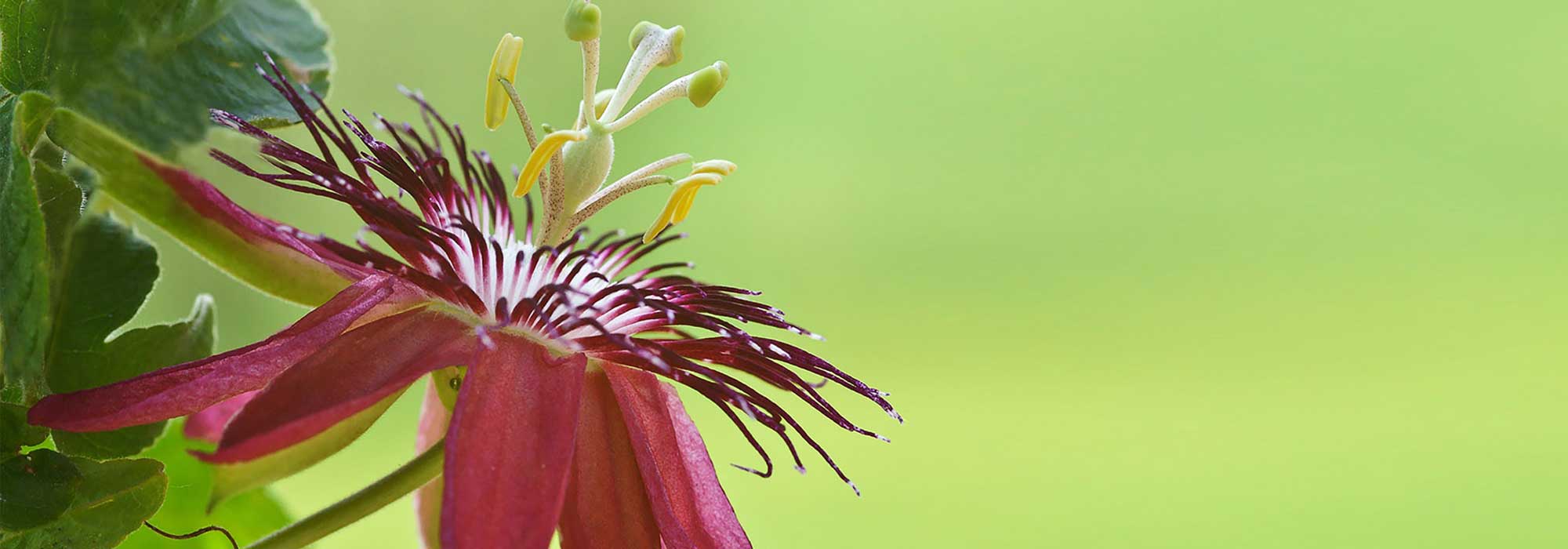
Choosing a passion flower
Our tips to make the right choice
Contents
Passion flowers are magnificent climbing and voluble plants, featuring splendid carved flowers. In fact, they are most often cultivated in our latitudes for their ornamental qualities, although some of them are capable of producing delicious fruits, even in our unfavourable climates. The hardiest can be grown outdoors in the mildest regions of the hexagon, but most are kept in pots and placed in a conservatory.
A very wide selection of passionflowers is available to you, as the genus Passiflora comprises around 530 species. The beauty of the flowers, fragrance, flavour of the fruits, hardiness… Choosing a passionflower therefore requires considering its characteristics to ensure they meet your expectations.
Choosing an ornamental passion flower
Passion flowers are climbing plants with exotic and highly ornamental flowering. However, with the multitude of existing passion flowers, it can be challenging to settle on one variety over another. Different selection criteria can help you make your choice, starting with the beauty of the flowers, their fragrance, and the flowering period.
Based on the beauty of the flowers
If you are looking for a passion flower that stands out for the beauty and originality of its flowers, you might be captivated by the following varieties.
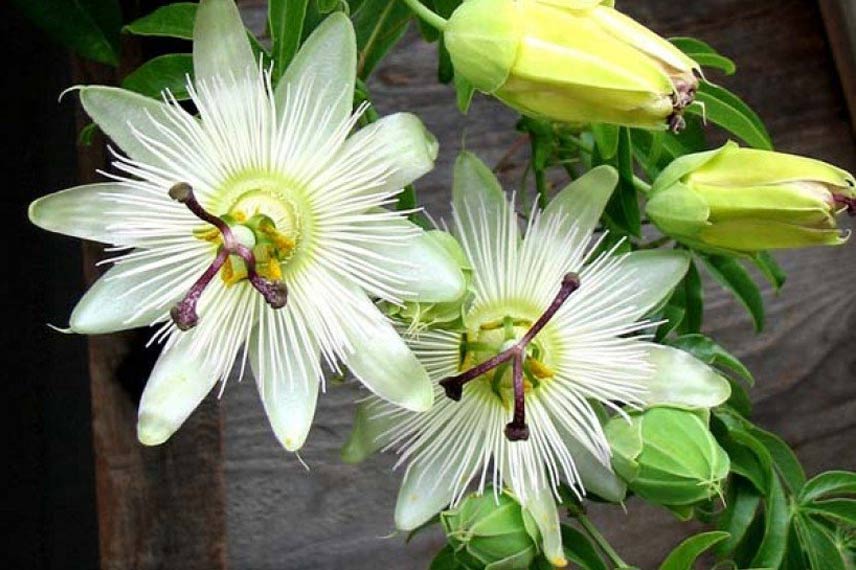
Passiflora caerulea ‘Constance Elliott’
The Passiflora caerulea ‘Constance Elliott’ stands out from the very classic and widespread Passiflora caerulea due to its pure white flowers, punctuated with purple stigmas. A flowering that is both understated and very elegant, allowing it to easily associate with other plants in the garden.
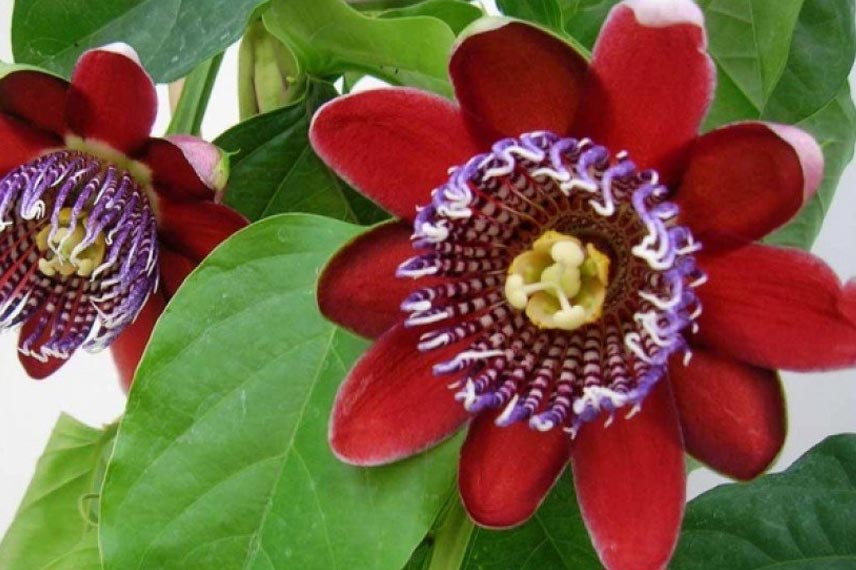
Passiflora alata
The Passiflora alata produces large passion flowers, quite remarkable due to their vibrant red colour, warm and deep. Flowers adorned with a crown of curly purple filaments, striped with white.
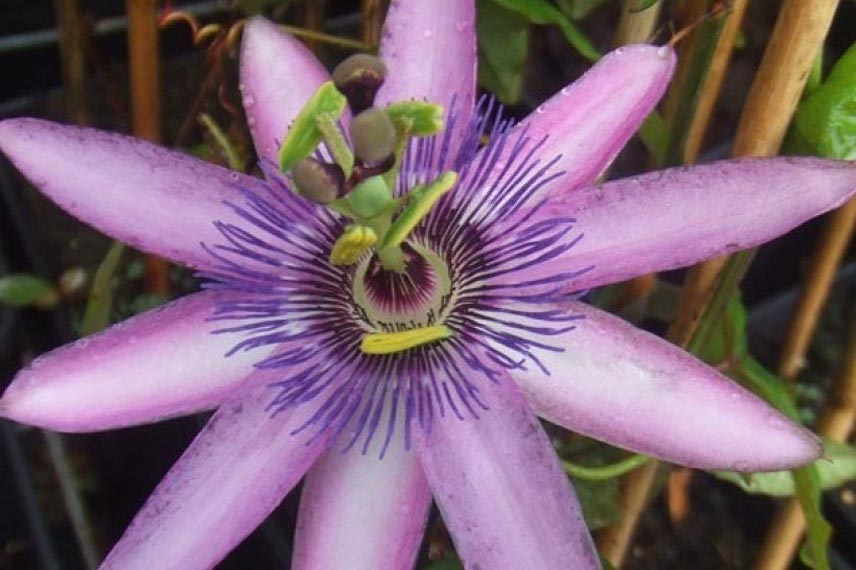
Passiflora x Lavender Lady
The Passiflora x Lavender Lady offers a very original flowering composed of large single flowers in a lavender colour, with a heart adorned with a small crown of purple, white, and blue-violet filaments.
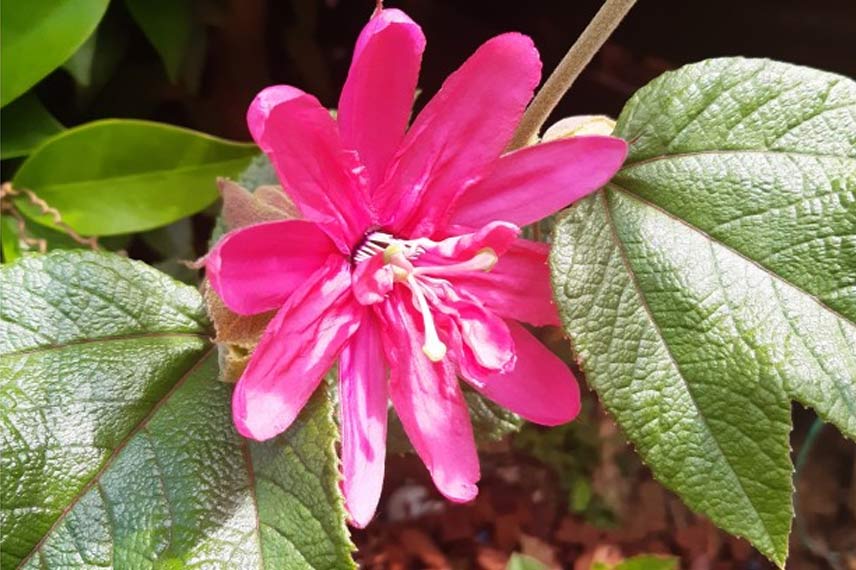
Passiflora insignis ‘Pink Passion’
The Passiflora insignis ‘Pink Passion’ offers a generous and very original flowering, composed of double and star-shaped flowers. Flowers in a stunning bright pink, fresh and luminous, allowing them to integrate into any garden style.
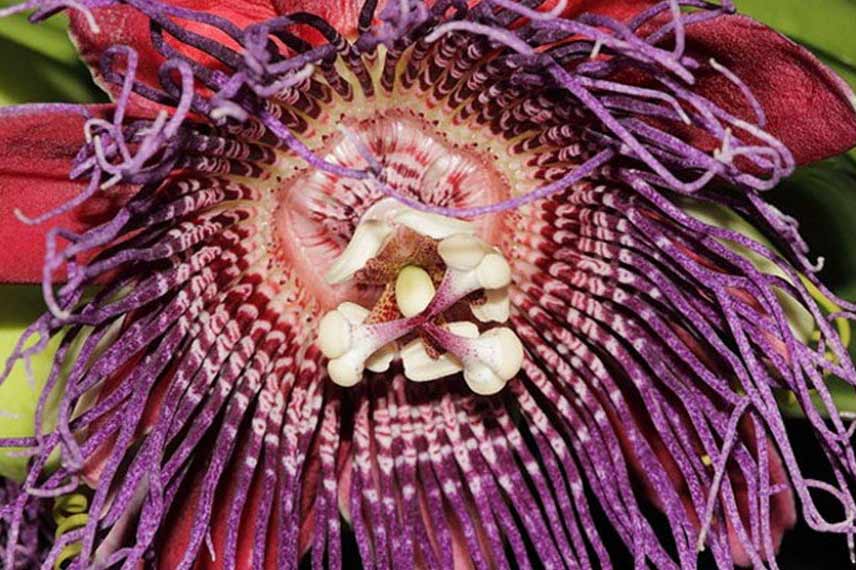
Passiflora quadrangularis
The Passiflora quadrangularis also deserves a place in this listing of the most beautiful passion flowers. Indeed, its large flowers are quite spectacular, with their carmine red colour and their curly purple and white filaments. However, be careful, this passion flower is a giant tropical liana that can reach 8 m in height!
Based on the fragrance of the flowers
The Passiflora Incense offers one of the most fragrant flowerings available. Its large, highly fragrant flowers are also very graphic, with their deep mauve-violet hue and their well-contrasted heart with blue-violet filaments.
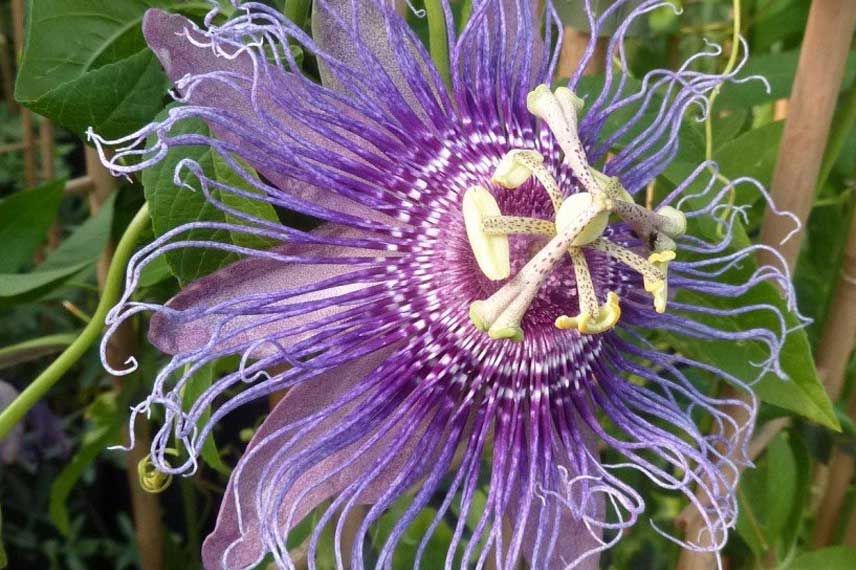
Passiflora Incense
Although more classically shaped, the Passiflora ‘Perfume Passion’ has been specifically selected for the pleasant fragrance that emanates from its flowers.
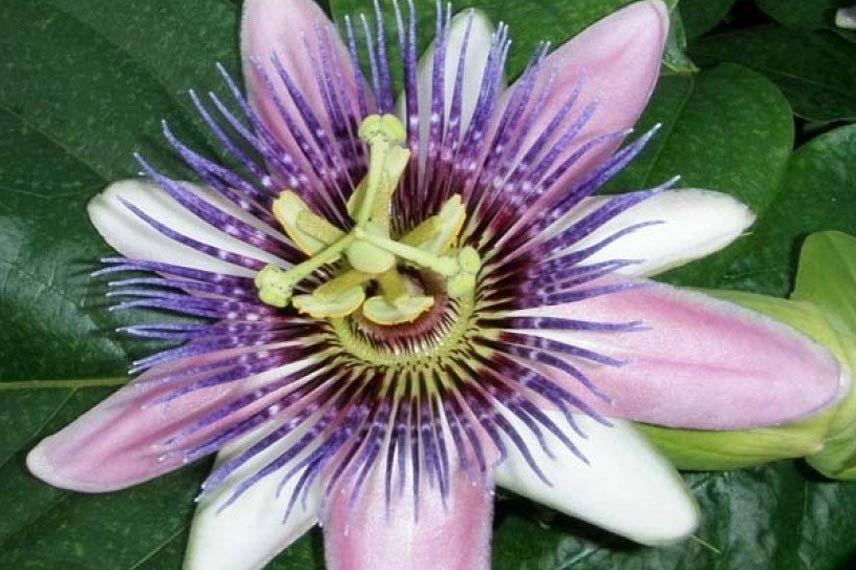
Passiflora ‘Perfume Passion’
It is worth noting that other varieties, already mentioned previously, also offer a well-scented flowering. This is particularly true for Passiflora alata and Passiflora quadrangularis.
→ Learn more in our article Most fragrant passion flowers: how to choose and successfully grow them.
Based on the flowering period
The vast majority of passion flowers bloom between July and September, or between June and October.
To enjoy the longest possible flowering, you can opt for passion flower varieties that bloom for longer. In this regard, the Passiflora insignis ‘Pink Passion’ is a champion, as it produces flowers between April and September, for a period of six months.
It is interesting to note that Passiflora x Lavender Lady offers a staggered flowering, between September and November. The Passiflora incarnata also blooms until November, with a flowering that begins in July.
Choosing a fruit-bearing passion flower
The plant that produces the famous passion fruits is none other than the Grenadilla, or Passiflora edulis, a self-fertile variety that can be fertilised by its own pollen. However, note that our climates are not the most conducive to intense production of passion fruits. The flower of Passiflora edulis is ephemeral, remaining open for only one day. Manual pollination is therefore highly recommended to obtain fruits. These offer a gelatinous, sweet orange pulp, particularly rich in vitamins A and C.
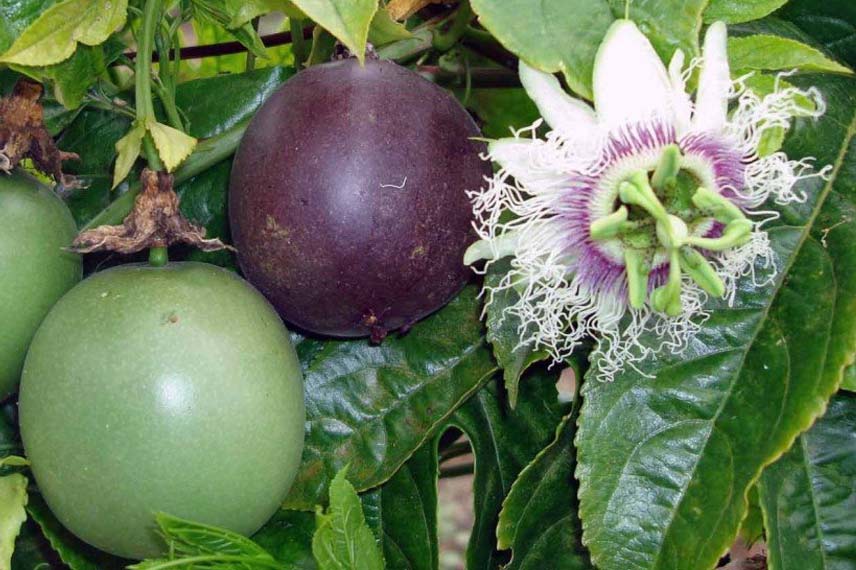
Passiflora edulis
Passiflora incarnata is one of the few that offers tasty fruits in our latitudes. It is also a medicinal passion flower, used in traditional pharmacopoeia to treat anxiety and sleep disorders. Its beautiful pale mauve flowers are also very fragrant. Flowering is followed by fruiting, which takes the form of green to yellow fruits, edible and delicious. This is a self-sterile passion flower. Two distinct individuals are therefore necessary to obtain fruits.
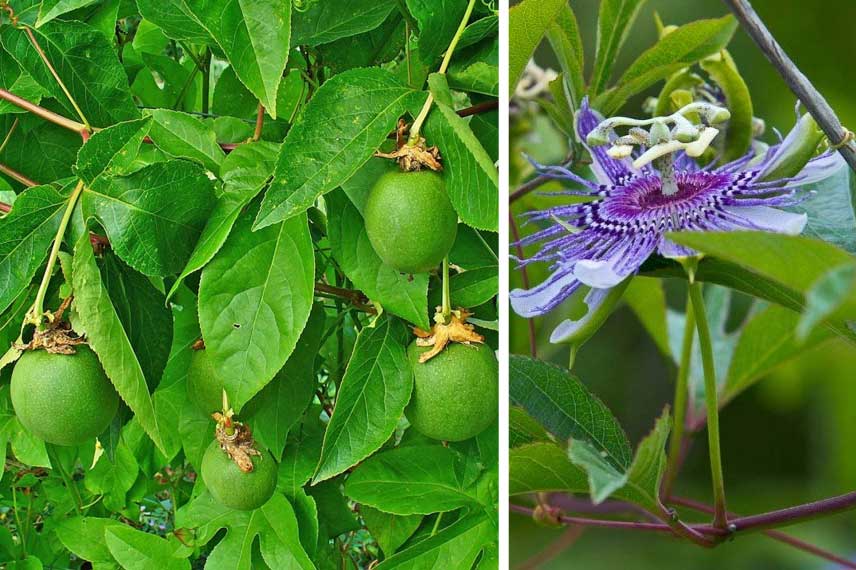
Passiflora incarnata
Discover other Passionflowers
View all →Available in 0 sizes
Available in 0 sizes
Available in 0 sizes
Available in 0 sizes
Available in 1 sizes
Available in 1 sizes
Available in 1 sizes
Available in 2 sizes
Available in 1 sizes
Available in 2 sizes
Choosing a passion flower based on its hardiness
Passion flowers are vigorous climbing plants, but they are only moderately hardy and can be frost-sensitive. Indeed, they originate from the warm temperate and tropical regions of America. If you plan to plant them in the ground (only in regions with mild winters), you will need to choose one of the hardiest species. However, if you have a conservatory, the less hardy varieties can be successfully grown in pots there.
The hardiest varieties
One of the hardiest is the Passiflora caerulea or blue passion flower. This blue and white flowering variety, reaching a height of 7 m, is indeed capable of withstanding temperatures around -12°C at ripeness (for short periods). It is also able to endure summer drought. As a result, it is the most widespread species in France.
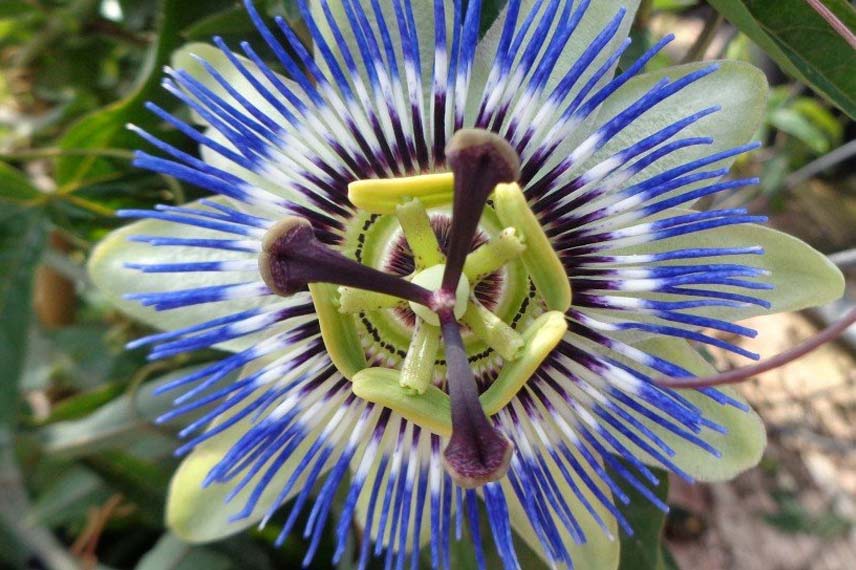
Passiflora caerulea
Some cultivars of this passion flower also exhibit very good hardiness, such as ‘Constance Elliott’ and ‘Purple Haze’. However, be aware that the passion flower can become invasive in the South of France.
Note that Passiflora incarnata and Incense passion flower are also hardy down to -10°C.
→ Learn more in our advice sheet: Which passion flower to plant according to your region?. Also read our tips in What is the best place to plant a passion flower?
- Subscribe!
- Contents
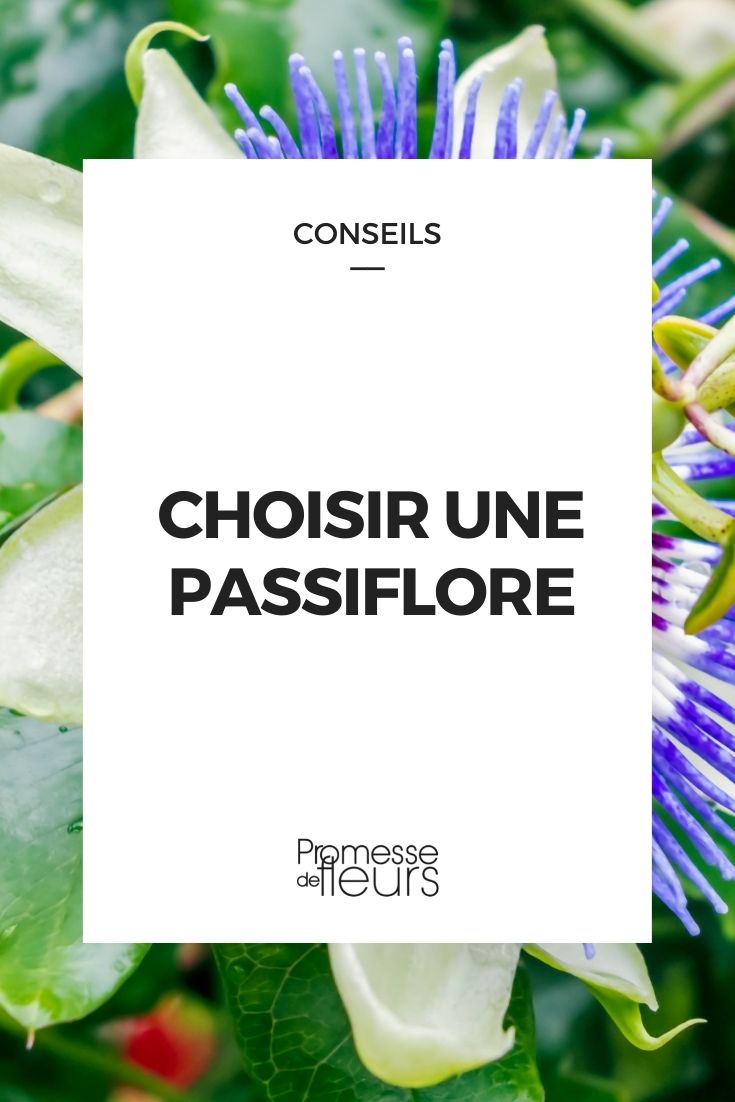































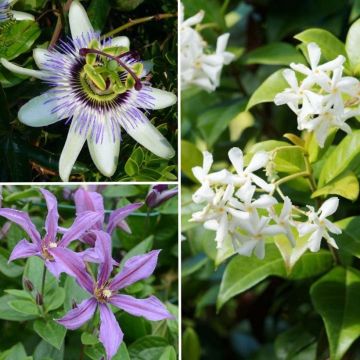
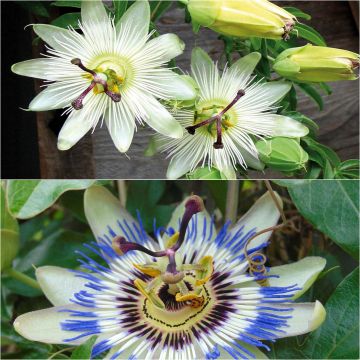
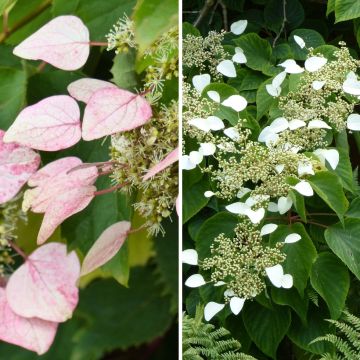
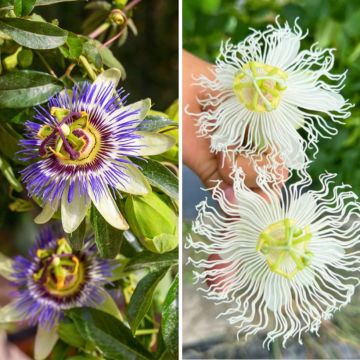
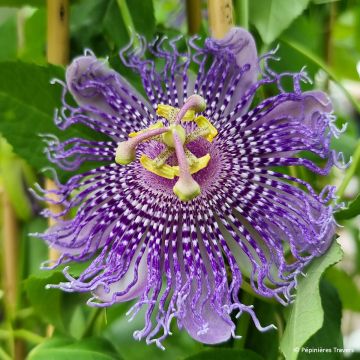
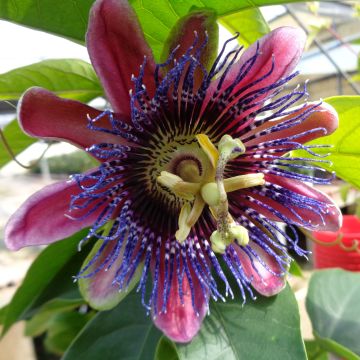
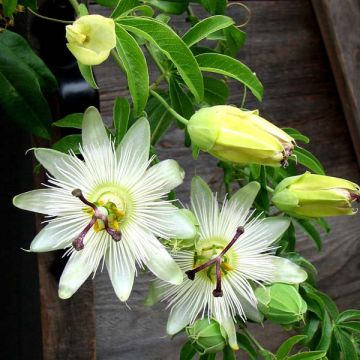
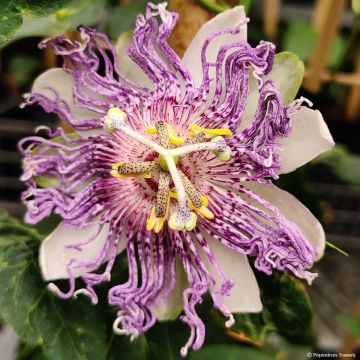
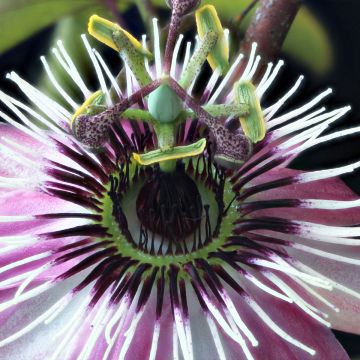
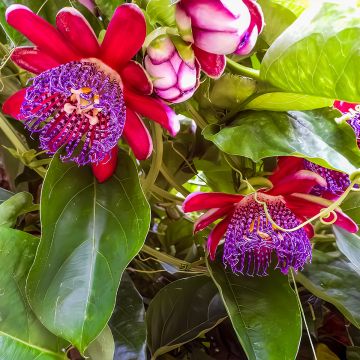
Comments